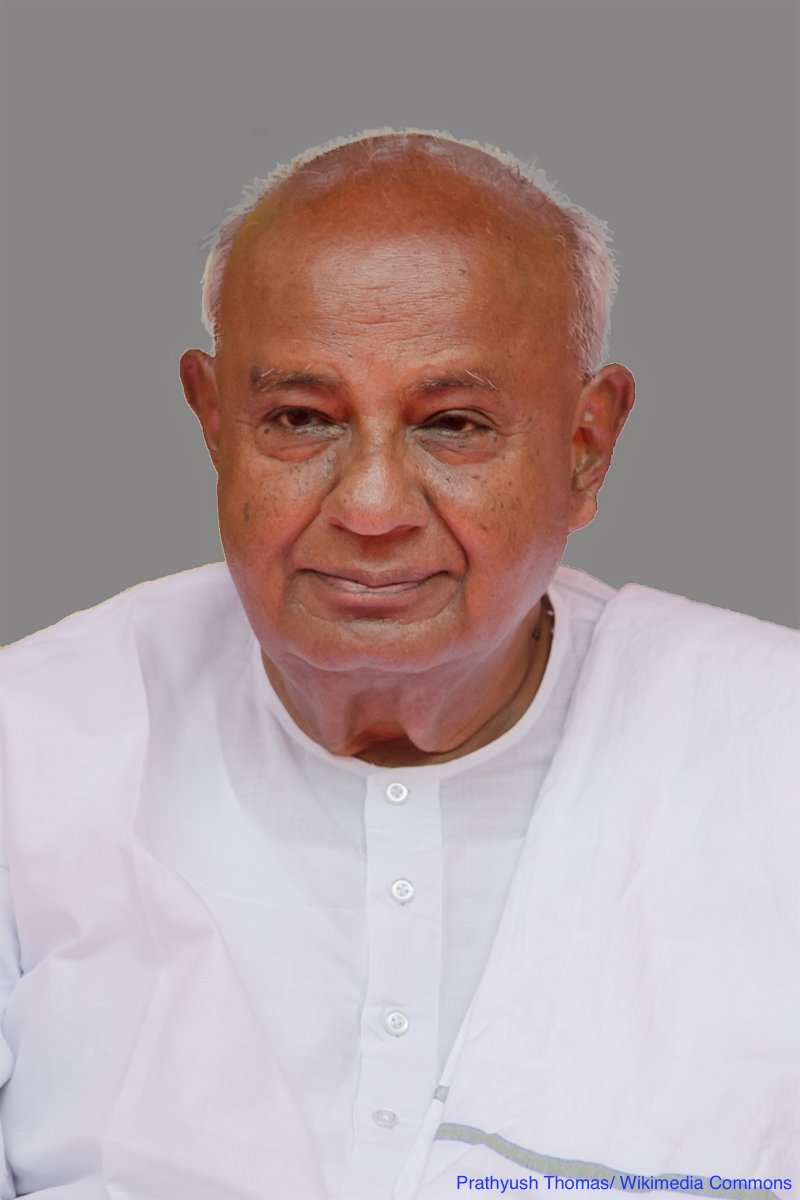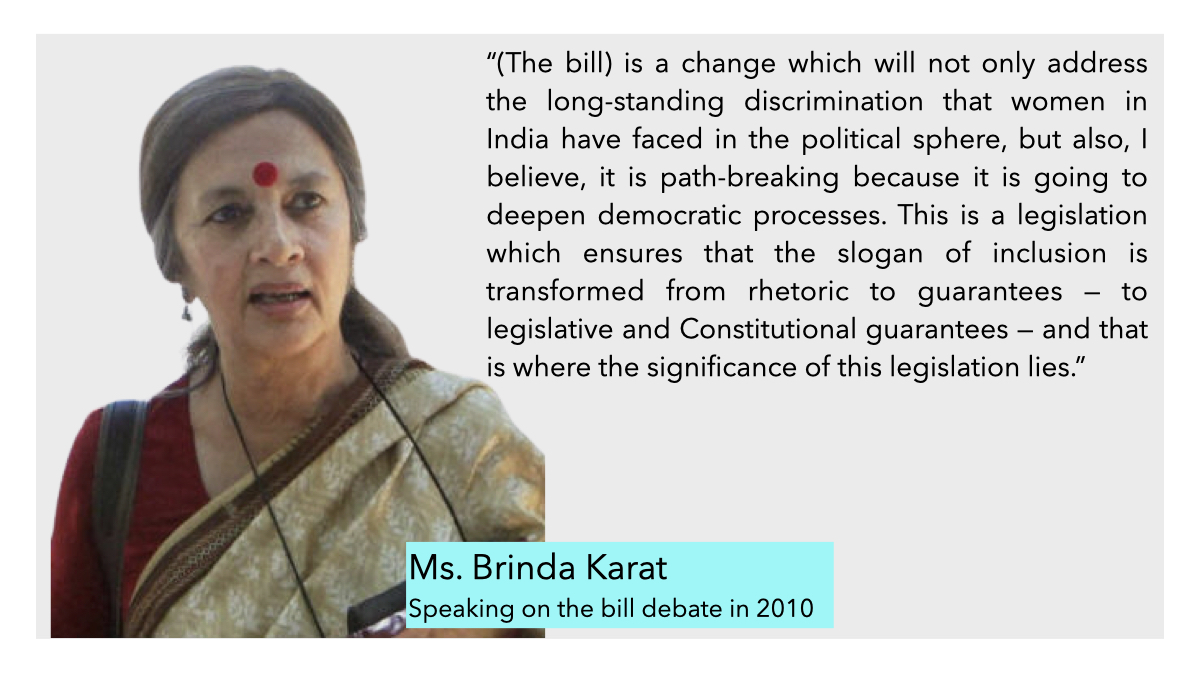On this day in 1996: Prime Minister HD Deve Gowda introduced the Constitution (81st A) Bill in Parliament to reserve a third of the seats for women in the Lok Sabha and State Assemblies.
In 1996 (the 11th LS), there were 41 women in the House. Today, in the 17th LS, there are 79
In 1996 (the 11th LS), there were 41 women in the House. Today, in the 17th LS, there are 79

Since then, the guarantee for greater representation of women in politics have featured in many Presidents’ speeches and in election manifestos of national and regional parties.
3 more attempts to provide such a constitutional mandate were made in 1998, 1999 and 2008.

3 more attempts to provide such a constitutional mandate were made in 1998, 1999 and 2008.


Those opposed to reservation for women argue that universal adult franchise is enough. They hold that reservation would be seen as not competing on merit. Ms. Renuka Ray, speaking in the Constituent Assembly debate, had called it an insult to women’s intelligence and capacity. 

Proponents of the reservation policy argue that affirmative action is needed to improve women’s status in the society. Between the 1st and 11th Lok Sabha, women's representation ranged between 4% and 8%. 







Other alternatives to reservation were considered when the 2008 Bill was sent to the Standing Committee on Law and Justice: reservation for candidates within political parties; and dual-member constituencies where constituencies will have two MPs, one being a woman.
During the Committee deposition, some pol. parties pointed out that party quota may lead to parties fielding women candidates in unwinnable seats. Reservation would also mean that women could contest the elections, but this may not translate into them getting voted into power
An Indian MP typically represents 2 million people in Parliament. While on the one hand, dual constituencies would allow for sharing of responsibilities, concerns were raised that elected women representatives may be relegated to a secondary role.
The Committee did not endorse these alternatives and looked into other issues with the Bill.
The Committee examined the claim that elected women representatives acted as proxies to men and found it to be baseless.
The Committee examined the claim that elected women representatives acted as proxies to men and found it to be baseless.

The Committee also looked into whether rotation of reserved seats would reduce the MP's incentive to work for their constituency as they could be ineligible to seek re-election from that constituency. 

The Committee held that irrespective of whether a Member would be elected next time or not, it is the MP duty's to work towards the welfare of the constituency.
The 2008 bill had proposed a 15-year time limit for reservation of seats. On this, the Committee recommended that once an “adequate” political representation of women is achieved, then the time prescribed for reservation could be reconsidered.
Where things stand today: To a Parliamentary question filed in the 2021 Monsoon Session, the government has maintained that political consensus needs to be formed before a bill on women's reservation can be brought before Parliament. 



Members from several political parties also raised the issue of 33% reservation during a discussion in Parliament on International Women’s Day this year.
/end
(Pictures from RS website/Twitter handles)



/end
(Pictures from RS website/Twitter handles)




• • •
Missing some Tweet in this thread? You can try to
force a refresh






